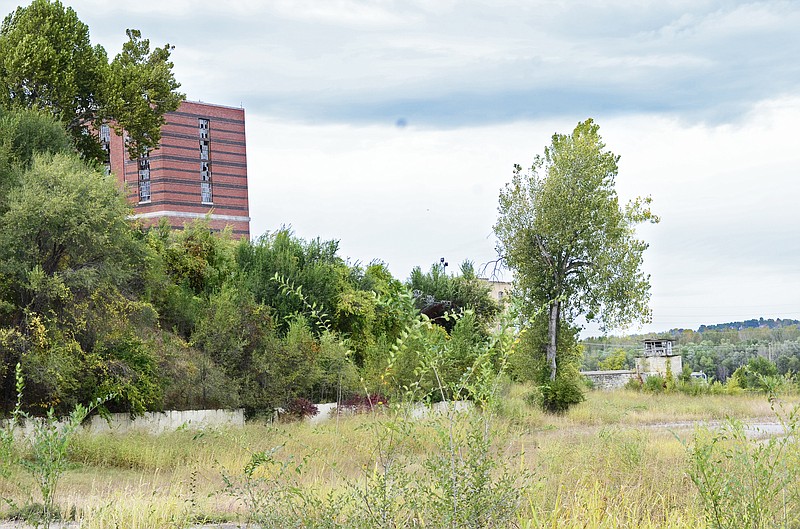An agreement for developing a hotel and conference center at the Missouri State Penitentiary is nearing completion, with some construction at the site tentatively planned for spring.
The city attorney and neighborhood housing supervisor provided an update to the massive multi-million-dollar redevelopment project at the historic prison.
"We are very close to coming to final terms," said City Attorney Ryan Moehlman at Thursday's Public Works and Planning Committee meeting.
Rachel Senzee, the neighborhood services supervisor, said projects for building two roads and a few building pad sites are scheduled for the spring, with funds stemming from an Economical Development Administration grant.
"The EDA grant, at its core, is quite simple ... it's been a heavy lift to get it going, but once a contractor can get on, it's pretty basic work," she said.
The developer's agreement encompasses plans for a hotel, conference center and some sort of parking solution.
Funds for the hotel stem from private investment, with the possibility of receiving some financing assistance through tax increment financing provided by the Missouri Department of Economic Development. Tax increment financing applies to regions where blight may be addressed through redevelopment.
Moehlman said the conference center will be funded through the city's tourism tax.
An earlier date was planned for completing the agreement, but there was a small "hiccup" with the financing, Moehlman said.
"It's going to be something that once we figure it out, it's going to come pretty rapidly to the City Council," he said.
The hotel and conference center are just two elements of an expansive MSP master plan. The city intends to commercialize about 32 acres of the decommissioned grounds acquired from the state while maintaining and restoring some of the prison's original structures.
The goal is to spur local and regional economies through creating new businesses, jobs and a hub for tourism.
Investment so far stemmed from the state and city, and federally through the EDA grant worth $1.5 million. The City Council earmarked $1 million in American Rescue Plan funds toward site costs.
Partnering together, the Missouri Primary Care Association and Missouri Behavioral Health Council proposed plans to construct a $20 million facility at MSP. The associations said they seek to construct offices, technical training facilities and a conference center.
"We are currently working with the master architect and their architects and engineers, and I hope we will see some agreement in the near future," Moehlman said.
He said the associations expressed interest in co-locating with the state after it announced building another health lab near Chestnut Street valued at $180 million -- equating to $200 million of investment, Moehlman said.
"We are looking pretty smart for a $1 million city investment to attract that kind of investment to downtown Jefferson City," Moehlman said.
Staff in the meantime continues to work on other tasks associated with the site.
The city must undergo an environmental review to meet a requirement of the EDA grant. Senzee said this process is usually required for spending federal dollars, but because of MSP's historical component, it is partly unique.
"A part of it also takes into account the adverse effects on cultural resources and since MSP is considered eligible for a National Register site, we have to undergo an additional process," Senzee said.
The prison was submitted to the National Register of Historic Places for a third time in July.
MSP operated in 1836 as the first prison west of the Mississippi River and dubbed the "bloodiest 47 acres in America" by Time Magazine. While the Capitol building was the first major building, the prison followed shortly after.
Thought at one-time to serve as the largest prison in the country, it was infamous for leasing prison labor to the private market.
Since its decommission in 2004, historical tours are hosted throughout the remaining facilities with great success, generating an estimated $2.8 million in economic impact to the city last year.
During the Oct. 13 meeting, Councilman Ron Fitzwater asked what process entailed demolishing some or all of the prison's large wall.
"The issue with the wall is it's in our (master) plan to demo, but the state of Missouri has the final say over what happens with the wall," Senzee said.
Senzee said in a previous redevelopment meeting, the wall did cause some issues. Planners discovered an opportunity to apply for a grant to pay some demolition costs, and she said that "may have shocked some in the room."
"It may be if the state is not ready for the demo of the wall we may need to proceed with the grant opportunity without including the wall," she said. "I don't know where that's going to land."
Pondering the wall's demolition is fair, she said, because it's important to know "it's something you really want to do."

